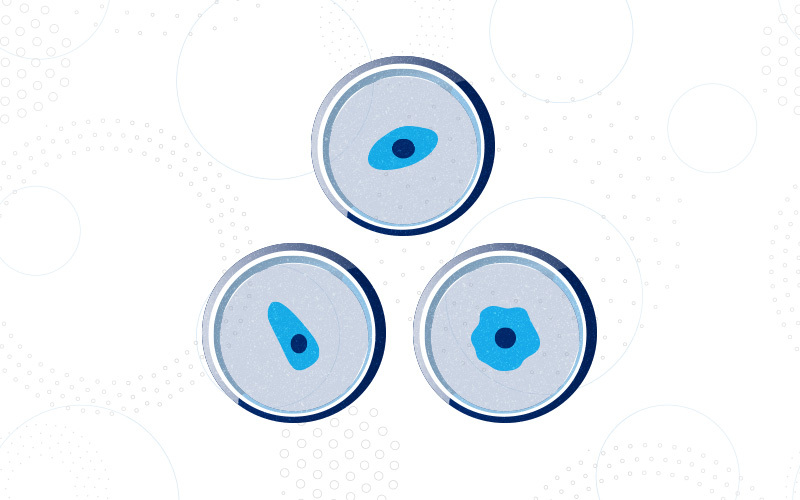Recommendations for reproducibility in stem cell research

The ability to program induced pluripotent stem cells (iPSCs) and drive their differentiation into a variety of neural cells is essential for studying neurological disorders, including intellectual and developmental disabilities (IDDs). But issues regarding variability and reproducibility from lab to lab make translating discoveries difficult, in turn slowing the progress of IDD research. To address this problem, a team of neurology researchers from the Intellectual and Developmental Disabilities Research Centers (IDDRC) network recently published a set of recommendations to bring consistency to this area of research. Their suggestions are published in a paper in Stem Cell Reports.

“Unfortunately, problems with reproducibility and variability have been a roadblock in the field for a while,” says co-author Mustafa Sahin, MD, PhD, director of the Rosamund Stone Zander Translational Neuroscience Center at Boston Children’s Hospital. “It is clear that better reporting of the experimental procedures used is necessary.”
The paper stemmed from a November 2019 meeting of the IDDRC, a network of 14 research organizations collaboratively studying IDDs. “Everybody was frustrated with the variability from paper to paper,” says Sahin, who is also an associate director of the IDDRC at Boston Children’s. “We recognized that more visibility into the variables that matter is needed.”
Emphasis on detailed information

The team first reviewed 58 research articles that utilized iPSC-derived neural cells to investigate IDDs. “We were then able to make recommendations for best practices that can be adopted by research scientists when writing the papers for publications,” says first author Nickesha Anderson, PhD, of the Sahin laboratory. “We also believe that journal editors will find this useful, perhaps requiring that papers using iPSCs for IDD research provide more complete, detailed information about the cells and experimental methods.”
While the team did not specify the ‘best’ type of iPSC-derived neural cell to use, they have several suggestions for ensuring all of the needed data is available to reproduce experiments and make conclusions about findings in IDDs.
Describe cells’ biology
One of the key recommendations is describing the biology of all of the cells used in an experiment. This includes information about the stem cells, control cells, and the patient from whom the iPSCs were derived. “For example, we suggest using age- and sex-matched control cells whenever possible, as well as the same stem cell type for controls as the cells under study,” says Anderson.
Provide technical details
The most significant technical suggestion is to provide more detailed information on the cell line used to model the specific disorder. That includes the method used to reprogram the cells, how the cells were propagated, and details about the reagents used.
“The reason these are really important is that stem cell-derived neurons are very responsive to handling,” says Anderson. “Small things that may not matter for other, more robust cell lines can have a huge impact on neurons.”
Consider functional testing
The team also makes recommendations for functional testing to see if the neurons behave appropriately. Considerations involve both electrophysiological and morphological analysis. “If you’re making neurons, you want to make sure that they not only look like neurons, but that they are also functional.”
While the paper specifically focuses on IDDs, Sahin believes the recommendations can be useful for any research that uses cells differentiated from stem cells. “The NIH is very concerned about rigor and reproducibility,” he says. “And while it is a severe problem for studying stem cell-derived neurons in intellectual disability disorders, it is not limited only to those disorders.”
IDDRCs are funded by the Eunice Kennedy Shriver National Institute for Child Health and Human Development (NICHD). Other authors of the study include Anita Bhattacharyya (Waisman Center), Kristen Kroll (Washington University School of Medicine), and Wardiya Afshar Saber and Ivy Chen of Boston Children’s.
Learn more about IDDRC research at Boston Children’s.
Related Posts :
-

New research paves the way to a better understanding of telomeres
Much the way the caps on the ends of a shoelace prevent it from fraying, telomeres — regions of repetitive DNA ...
-

AI-designed proteins open doors to new immunotherapies
Artificial intelligence (AI) is increasingly helping drive advances in science and medicine — including cellular signaling. In a recent study, published ...
-

The dopamine reset: Restoring what’s missing in AADC deficiency
In March 2023, a young girl came to Boston Children’s Hospital unable to hold up her head — one striking symptom ...
-

A new druggable cancer target: RNA-binding proteins on the cell surface
In 2021, research led by Ryan Flynn, MD, PhD, and his mentor, Nobel laureate Carolyn Bertozzi, PhD, opened a new chapter ...





